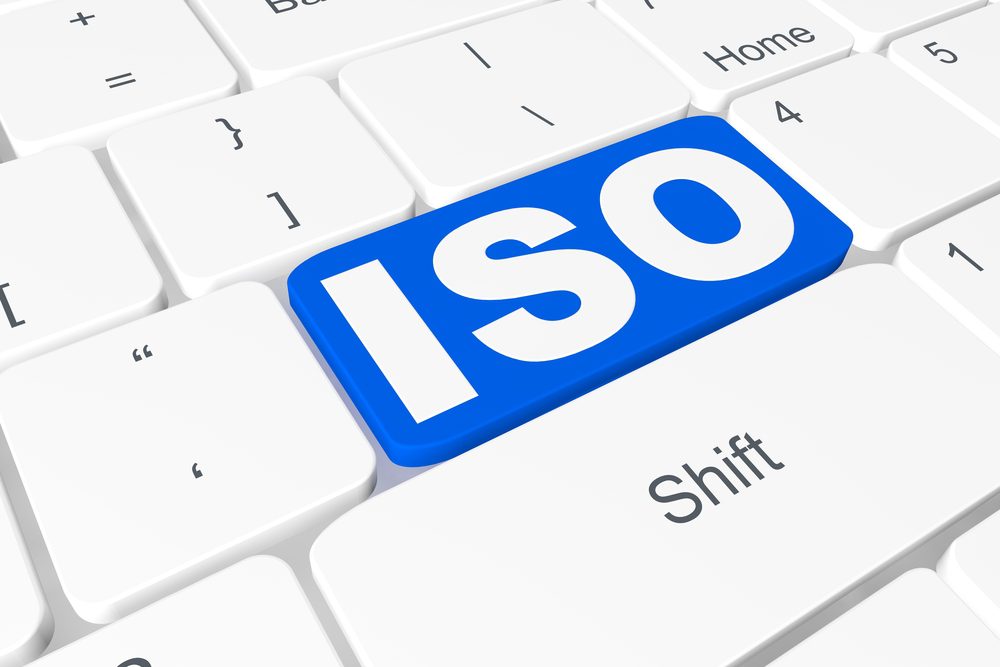Streamline Your Workplace Safety with WHSMS and Achieve ISO 45001 Compliance in Australia
Work Health and Safety Management Systems (WHSMS) are essential for promoting a safe and healthy work environment. They provide a structured approach to managing risks, hazards, injuries, and illnesses in the workplace.
ISO 45001 is an internationally recognized standard that sets the requirements for occupational health and safety management systems. ISO 45001 provides guidance on how to establish, implement, maintain, and continually improve a WHSMS.
In this article, we will explore how implementing a WHSMS that complies with ISO 45001 can benefit organizations and their employees. Implementing a WHSMS that complies with ISO 45001 provides several advantages.
Firstly, it helps organizations demonstrate their commitment to providing a safe and healthy work environment for their employees. Compliance with the standard assures stakeholders that the organization has implemented effective controls to manage risks associated with its activities.
Secondly, implementing a WHSMS can help reduce incidents of workplace injuries and illnesses by identifying hazards and taking appropriate measures to control them. This not only benefits employees but also reduces costs associated with lost productivity, medical treatment, compensation claims, and legal expenses.
In conclusion, implementing a WHSMS that complies with ISO 45001 is essential for any organization seeking to prioritize the health and safety of its employees while fulfilling legal obligations for occupational health and safety management.
The Importance Of Workplace Safety
Adopting work health and safety management systems (WHSMS) compliant with ISO 45001 helps organizations identify and mitigate potential workplace hazards and risks.
Proactive preventative measures should be taken to ensure the safety of employees, including the implementation of hazard control measures and job safety analysis.
Risk assessment is a crucial part of the WHSMS, evaluating the potential impact of a hazard on employees’ health and safety and judging the effectiveness of any control measures in place.
Organizations should ensure that their WHSMS is regularly updated and evaluated to ensure that any new or emerging risks are addressed.
Preventative Measures
Work health and safety management systems (WHSMS) have become a crucial aspect of the operational activities of businesses. The implementation of ISO 45001, which focuses on occupational health and safety management systems, has further emphasized the importance of preventative measures in managing safety risks. These measures are implemented to mitigate the likelihood and impact of potential incidents within a workplace.
Effective risk management begins with identifying potential hazards and assessing their associated risks. Once identified, preventative measures can be put in place to reduce the likelihood of accidents occurring.
These measures may include:
- Providing mandatory training for employees on safe work practices
- Ensuring all equipment is regularly maintained and inspected
- Implementing designated safe zones or barriers around hazardous areas
- Providing personal protective equipment to employees
- Implementing a system for reporting incidents or near-misses.
By systematically identifying hazards and implementing preventative measures, WHSMS can reduce the number of workplace incidents and minimize injuries and fatalities among employees while also increasing productivity levels within an organization.
Risk Assessment
In the realm of work health and safety management systems (WHSMS), risk assessment plays a critical role in identifying potential hazards and determining the associated risks in the workplace. The ISO 45001 standard emphasizes the importance of a systematic approach to occupational health and safety (OH&S) management, which includes conducting regular risk assessments.
This process involves identifying potential hazards, evaluating their likelihood and severity, and implementing control measures to mitigate or eliminate the risks. Risk assessments aim to prevent accidents, injuries, illnesses, and fatalities in the workplace by reducing or eliminating exposure to hazardous conditions or activities.
By adopting a proactive approach to WHSMS, organizations can ensure that their employees are provided with a safe working environment. Risk assessments also help identify areas for improvement in current safety measures and enable organizations to continually improve their OH&S performance. As such, regular risk assessments are essential components of an effective WHSMS that prioritizes employee well-being and productivity.
Understanding Iso 45001
- ISO 45001 is an international Occupational Health and Safety management system standard that provides a framework for organizations to address their OH&S risks and improve their OH&S performance.
- Organizations seeking to gain ISO 45001 certification must demonstrate that they have established, documented, implemented and maintained an OH&S management system.
- Implementing ISO 45001 requires an organization to develop a policy, objectives, procedures and processes to eliminate risks and promote a safe working environment.
- ISO 45001 is based on the Plan-Do-Check-Act cycle, which is an established method for continual improvement.
- Certification to ISO 45001 is an internationally recognized mark of excellence, which demonstrates an organization’s commitment to the health and safety of its employees and customers.
- Organizations must demonstrate their compliance with the ISO 45001 standards and undergo an external assessment by a certified body in order to obtain certification.
Iso 45001 Standards
The implementation of an effective Work Health and Safety Management System (WHSMS) is crucial for organizations to ensure the safety and well-being of their employees.
The International Organization for Standardization (ISO) has developed ISO 45001, a standard that sets out the requirements for an Occupational Health & Safety Management System.
This standard provides a framework for organizations to establish, implement, maintain and improve their WHSMS.
ISO 45001 standards require that organizations demonstrate their commitment to occupational health & safety by establishing policies, objectives and targets.
It also requires the identification of hazards, assessing risks and implementing controls to manage them.
Compliance with this standard can be achieved through certification by accredited third-party auditors who evaluate the organization’s WHSMS against the ISO 45001 requirements.
By complying with this standard, organizations can effectively manage occupational health & safety risks and provide a safer working environment for their employees while meeting legal and regulatory requirements.
Iso 45001 Certification
ISO 45001 certification is a crucial step in ensuring that organizations are compliant with the international standard for Occupational Health & Safety Management System. This certification process involves a thorough evaluation of an organization’s WHSMS by accredited third-party auditors, who assess the organization’s compliance with the requirements of ISO 45001.
The aim of ISO 45001 certification is to verify that an organization has implemented effective measures to manage occupational health & safety risks and promote a safety culture. The ISO 45001 certification process requires organizations to demonstrate their management commitment to providing a safe and healthy working environment for their employees through the implementation and maintenance of an OH&S management system.
It also requires organizations to establish policies, objectives, and targets that align with this commitment. Achieving ISO 45001 certification signifies an organization’s dedication to reducing workplace injuries, illnesses, and fatalities while meeting legal and regulatory requirements. Additionally, it helps improve employee morale, productivity, and engagement by creating a safer work environment.
Implementing Iso 45001
To ensure that an organization complies with ISO 45001, it is essential to implement a work health and safety management system (WHSMS) that aligns with the standard’s requirements.
This involves creating a WHSMS implementation plan that outlines the steps necessary to achieve compliance, such as establishing policies, objectives, and targets that promote a safety culture.
An example of a WHSMS implementation plan may involve conducting a risk assessment to identify potential hazards and implementing control measures to mitigate those risks.
It may also involve providing training and resources to employees to promote their involvement in maintaining a safe workplace.
By implementing an effective WHSMS, organizations can improve their compliance with ISO 45001 while promoting a safer work environment for their employees.
The Benefits Of Implementing An Iso 45001 Compliant Whsms
Implementing an ISO 45001 compliant WHSMS is a wise decision for any organization. The system provides a range of benefits that can improve the overall health and safety of employees in the workplace.
Some of these benefits include:
- Improved risk management: By implementing an ISO 45001 compliant WHSMS, organizations can identify potential hazards and assess them to determine the level of risk they pose. This helps to prevent accidents and incidents from occurring.
- Enhanced employee morale: An ISO 45001 compliant WHSMS demonstrates an organization’s commitment to ensuring the health and safety of its employees. This can lead to increased employee satisfaction and improved morale.
- Increased efficiency: A well-designed WHSMS can help organizations to streamline their processes, reducing waste and improving productivity.
- Competitive advantage: Obtaining ISO certification demonstrates an organization’s commitment to best practices in workplace health and safety systems, which can provide a competitive edge over other companies.
Overall, implementing an ISO 45001 compliant OH&S management system is a valuable investment for any organization. It not only ensures legal compliance but also reduces costs associated with injuries, illnesses, and property damage while enhancing employee satisfaction by providing safe working conditions.
Organizations need to understand the importance of implementing such systems effectively so that they can leverage it as a tool for achieving business objectives while creating safe working environments for their employees.
Risk Assessment And Management
- Risk Identification involves identifying the hazards that can cause harm to an organization’s employees, customers and the public.
- Risk Analysis involves assessing the level of harm that can be caused by each identified hazard.
- A Work Health and Safety Management System (WHSMS) that complies with ISO 45001 enables organizations to identify, assess and control risks in the workplace.
- By adhering to ISO 45001, organizations can ensure that their risk management processes are systematically implemented in order to reduce the potential for harm.

Risk Identification
In today’s fast-paced work environment, it is essential for organizations to establish effective work health and safety management systems (WHSMS) that comply with the international standard ISO 45001.
One of the key components of a successful WHSMS is risk assessment and management. Risk identification, in particular, plays a critical role in ensuring that organizations are able to identify and manage occupational health and safety risks effectively.
According to the ISO 45001 guidelines, risk identification involves identifying potential hazards that could cause harm or injury to employees or other stakeholders. This process requires a comprehensive understanding of an organization’s operations, including its work processes, equipment, materials, and human resources.
By conducting a thorough analysis of OH&S risks, organizations can develop targeted strategies for mitigating these risks and protecting their workforce from harm. Ultimately, effective risk identification is essential for building a robust WHSMS that enables organizations to meet their obligations under ISO 45001 while promoting a safe and healthy workplace environment for all employees.
Risk Analysis
As organizations strive to establish work health and safety management systems (WHSMS) that comply with ISO 45001, it is essential for them to conduct a comprehensive risk assessment and management process.
This process involves identifying potential hazards, assessing the likelihood and severity of their impact, and developing targeted strategies for mitigating these risks.
One critical component of this process is risk analysis, which involves analyzing data on past incidents, near-misses, and other relevant factors to identify trends and patterns in OH&S performance.
Through effective risk analysis, organizations can gain a deeper understanding of the root causes of workplace accidents and injuries.
This information can then be used to develop targeted strategies for improving safety management systems, such as implementing new training programs or modifying work processes to reduce the likelihood of accidents.
Ultimately, by incorporating risk analysis into their overall WHSMS strategy, organizations can promote a safer and healthier workplace environment while meeting their obligations under ISO 45001.
Legal Compliance
Legal Compliance in Work Health and Safety Management Systems (WHSMS)
Ensuring legal compliance is a crucial aspect of any work health and safety management system. The implementation of an effective WHSMS requires compliance with relevant safety legislation, such as the Work Health and Safety Act 2011 (Cth) in Australia.
Non-compliance can lead to severe consequences for businesses, including financial penalties, reputational damage, and even criminal charges. Therefore, it is essential to ensure that your WHSMS complies with applicable legal requirements to maintain a safe workplace environment.
One example of a workplace health and safety system that complies with ISO 45001 includes maintaining records of all incidents or accidents that occur on the premises. This record-keeping process should include details such as the date and time of the incident, the location where it occurred, details about what happened, and any injuries or illnesses sustained by employees.
Other examples of legal compliance requirements may include providing appropriate personal protective equipment (PPE) for workers, conducting regular risk assessments to identify potential hazards in the workplace, and implementing control measures to mitigate these risks. By adhering to these regulations and ensuring legal compliance within your WHSMS certification process can be achieved.
| Legal Compliance Example | Relevant Legislation | Key Requirements |
|---|---|---|
| Incident Reporting | Work Health & Safety Act 2011 (Cth) | Accurate recording of incidents/accidents |
| Personal Protective Equipment | Model Work Health & Safety Regulations 2011 | Provide appropriate PPE for workers |
| Risk Assessments | Work Health & Safety Regulations 2011 | Regular identification of potential hazards |
| Control Measures | Australian Standards AS/NZS ISO 31000:2009 | Implementation of measures to reduce risk |
| Training | Work Health & Safety Act 2011 (Cth) | Provide adequate training to employees |
In conclusion, ensuring legal compliance is an essential component of a successful WHSMS. Businesses must comply with relevant safety legislation and implement measures to mitigate any potential risks in the workplace. By adhering to these regulations, companies can achieve certification and maintain a safe working environment for their employees.
Continuous Improvement
- When it comes to continuous improvement, it is important to ensure that risk management and performance monitoring are included in the work health and safety management system (WHSMS).
- The WHSMS should be designed to identify and analyse potential risks and develop strategies to manage them.
- Performance monitoring should be conducted to ensure that the WHSMS is effective and efficient in meeting safety and health objectives.
- Compliance with ISO 45001 provides assurance that the WHSMS is properly designed and implemented for continuous improvement.
Risk Management
To ensure the continuous improvement of work health and safety management systems (WHSMS) that comply with ISO 45001, it is crucial to implement a thorough risk management process.
This involves identifying potential hazards and assessing the level of risk associated with each hazard. Once these risks have been identified, measures must be put in place to eliminate or control them. Risk management should also include regular consultation with employees to identify any new risks that may arise as a result of changes in the workplace.
To achieve effective risk management within an organization’s OH&S system, performance evaluation plays a critical role. This requires regular monitoring and review of the risk management process to ensure its ongoing effectiveness.
By measuring the success of implemented control measures and identifying any areas that require improvement, organizations can continue to enhance their WHSMS and minimize risks to their workers.
In conclusion, incorporating comprehensive risk management processes into an organization’s WHSMS is essential for achieving continuous improvement and ensuring compliance with ISO 45001 standards.
Performance Monitoring
To ensure that the work health and safety management systems (WHSMS) comply with ISO 45001, organizations must implement performance monitoring.
Performance monitoring is an essential component of ISO certification as it allows organizations to evaluate their safety performance continually.
This process involves regular reviews and assessments of the WHSMS’s effectiveness and identifying areas for continuous improvement.
Performance monitoring helps organizations identify any gaps in their safety systems and develop strategies to fill them.
It also enables the organization to track progress towards achieving its safety objectives and targets.
By implementing performance monitoring, organizations can ensure they are consistently meeting the requirements of the international standard for occupational health and safety management systems (ISO 45001).
Enhancing Reputation And Employee Morale
The implementation of work health and safety management systems (WHSMS) that complies with ISO 45001 is crucial in managing workplace safety and health system.
Ensuring the safety of employees not only prevents accidents but also positively impacts their mental health, leading to an overall healthy workplace. This aspect plays a significant role in enhancing reputation and employee morale, which are essential factors for any organization’s success.
To paint a clearer picture, here are four benefits of having a WHSMS that complies with ISO 45001:
- The implementation of WHSMS ensures compliance with legal requirements, reducing the risk of penalties and fines.
- By reducing incidents at work, employees feel more valued, increasing their job satisfaction levels.
- A WHSMS fosters trust between employers and employees by creating transparency in safety procedures.
- A safe working environment leads to fewer absences due to illness or injury, increasing productivity levels.
Overall, implementing a WHSMS that complies with ISO 45001 is about meeting regulations and creating a positive work culture that values its employees’ safety and well-being. Such an approach leads to enhanced reputation and employee morale while minimizing risks associated with workplace incidents.
Achieving Iso 45001 Compliance
Achieving ISO 45001 compliance is essential for organizations that prioritize workplace health and safety. This standard provides a framework for establishing, implementing, maintaining, and continually improving a work health and safety management system (WHSMS). The WHSMS plan must be tailored to the organization’s needs and context, taking into account its size, complexity, and activities.
To ensure compliance with the ISO standard, organizations must develop a comprehensive WHSMS plan that addresses all relevant hazards and risks in the workplace. For example, an effective WHSMS plan includes hazard identification processes, risk assessments, control measures, emergency preparedness procedures, incident reporting mechanisms, and training programs.
Certification of ISO 45001 demonstrates an organization’s commitment to workplace health and safety management. It also provides assurance to stakeholders that the organization complies with internationally recognized standards for occupational health and safety.
Therefore, it is crucial for organizations to adopt an integrated approach to work health and safety management to achieve ISO 45001 certification.
Frequently Asked Questions
What Is The Cost Of Implementing An Iso 45001 Compliant Whsms?
The cost of implementing an ISO 45001 compliant WHSMS varies depending on the size and complexity of the organization.
In general, the cost includes the development and documentation of policies, procedures, and protocols to ensure compliance with ISO 45001 standards.
Additionally, training programs for employees and management may be necessary to ensure adherence to safety regulations.
The cost also includes the implementation of audits and assessments to monitor ongoing compliance with ISO 45001 standards.
While the upfront cost may be significant, organizations that implement an ISO 45001 compliant WHSMS can benefit from improved safety performance, reduced risk of accidents or incidents, and increased productivity due to a safer work environment.
Can A Company Still Be Liable For Accidents And Injuries Even If They Have An Iso 45001 Compliant Whsms In Place?
The implementation of an ISO 45001 compliant work health and safety management system (WHSMS) is a crucial step for companies to ensure the safety and well-being of their workers.
However, even with this system in place, a company can still be held liable for accidents and injuries that occur on their premises.
The ISO 45001 standard provides guidelines for identifying and assessing risks, implementing controls, and continuously monitoring and improving the WHSMS.
It is the responsibility of the company to ensure that these guidelines are followed diligently to minimize the risk of accidents or injuries.
However, should an incident occur, it is essential that the company takes immediate action to investigate the cause, implement corrective measures, and provide support to those affected.
Ultimately, a company’s commitment to WHS cannot simply rely on compliance with standards but requires an ongoing effort towards creating a culture of safety within the organization.
How Long Does It Typically Take For A Company To Become Iso 45001 Compliant?
The process of becoming ISO 45001 compliant varies depending on the size and complexity of the organization. Generally, it takes approximately 6-12 months for an organization to implement an effective health and safety management system that aligns with the requirements of ISO 45001.
This includes identifying hazards and assessing risks, establishing policies and procedures, providing training to employees, and developing a plan for continuous improvement. However, it is important to note that achieving compliance is not a one-time event but rather an ongoing commitment to maintaining high levels of health and safety standards in the workplace.
Organizations must also undergo regular audits to ensure compliance with ISO 45001 standards.
Are There Any Industries Or Businesses That Are Exempt From Needing An Iso 45001 Compliant Whsms?
It is important to note that while ISO 45001 compliance is a global standard, there are certain industries or businesses that may be exempt from needing an ISO 45001 compliant WHSMS.
These exemptions typically depend on the specific regulatory requirements of each industry or business, as well as their risk profile and potential hazards.
However, it is still highly recommended that all organizations implement a robust WHSMS that prioritizes occupational health and safety for their employees and stakeholders.
This not only ensures legal compliance but also promotes a culture of safety and well-being within the workplace, which can ultimately lead to increased productivity and profitability.
Can An Iso 45001 Compliant Whsms Be Customized To Fit The Specific Needs Of A Company Or Industry?
An ISO 45001 compliant work health and safety management system (WHSMS) can be customized to fit the specific needs of a company or industry. The purpose of customization is to ensure that the system is tailored to meet the unique requirements of the organization in question.
This involves identifying hazards, assessing risks, and developing controls to mitigate those risks. It is important for companies to understand that customization does not mean deviating from established standards and guidelines. Rather, it means adapting them in a way that aligns with the organization’s goals and objectives while also complying with ISO 45001 regulations.
The end result is a WHSMS that is effective, efficient, and comprehensive in managing health and safety risks in the workplace.
Conclusion
The implementation of an ISO 45001 compliant Work Health and Safety Management System (WHSMS) is a crucial step in ensuring the safety and well-being of employees in any organization.
Although the costs of implementing such a system can vary depending on the size and complexity of the business, the benefits of having an ISO 45001 compliant WHSMS far outweigh the costs.
The investment in a comprehensive WHSMS translates to fewer workplace accidents, improved employee morale, and increased productivity.
It is important to note that even with an ISO 45001 compliant WHSMS in place, companies are still liable for accidents and injuries that occur within their premises.
However, having an effective WHSMS demonstrates a company’s commitment to providing a safe work environment for its employees and can be used as evidence of due diligence in legal proceedings.
It typically takes several months for a company to become fully compliant with ISO 45001 requirements, but this process can be expedited by engaging experienced consultants who have extensive knowledge of the standard.
While there may be some industries or businesses that are exempt from needing an ISO 45001 compliant WHSMS, it is advisable for all organizations to implement one as it provides a systematic approach to managing work health and safety hazards.
Furthermore, an ISO 45001-compliant WHSMS can be tailored to meet the specific needs of different industries or businesses by customizing policies and procedures.
In conclusion, implementing an ISO 45001 compliant WHSMS is not only necessary but also beneficial for any organization that values its employees’ safety and well-being.







